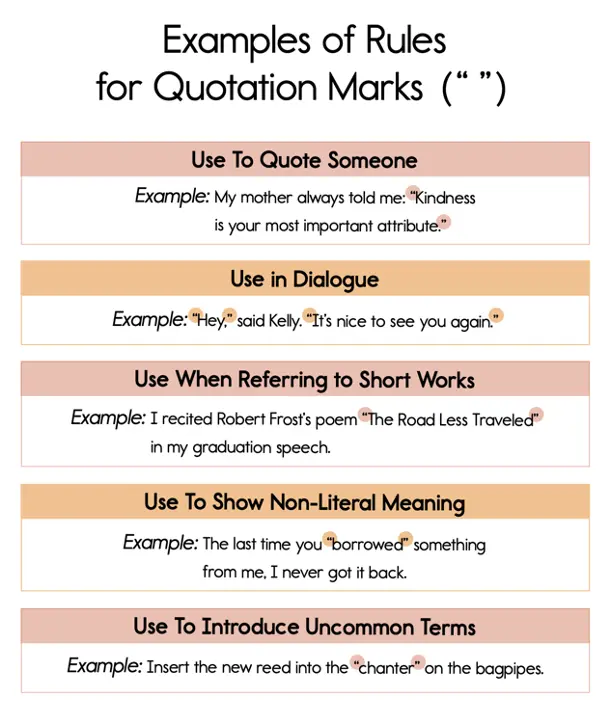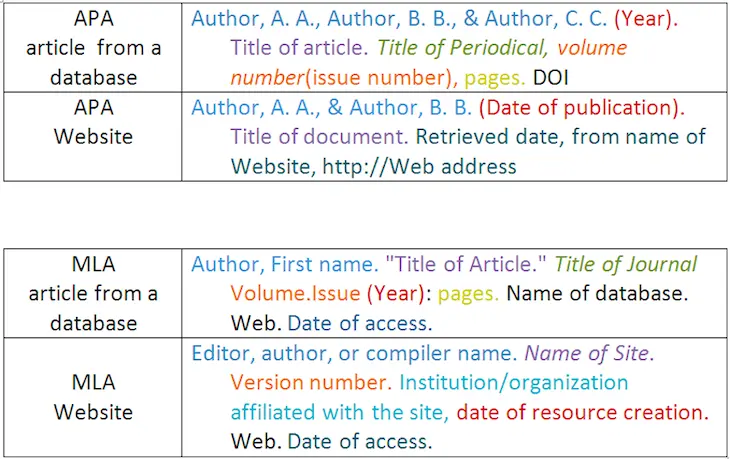Writing uniqueness has been a constant difficulty for me in school. The addition of Turnitin, a popular plagiarism detection tool, changed my routine. High similarity ratings made this software difficult to use, yet it was necessary for academic integrity. Initially, these ratings needed clarification. It was about knowing how Turnitin perceived my work, not just avoiding plagiarism. Curiosity drove me to learn about this tool. This post expands on my research to illuminate Turnitin's inner workings and guide others facing similar issues.
As I explored Turnitin, I noticed writing patterns and mistakes that contributed to these high similarity ratings. My research went beyond finding fast solutions to understanding what software considers original. I learned it wasn't only about words but about organization, sources, and presentation. The following parts will discuss the valuable lessons I've learned, the successful tactics I've established, and the best practices I've used to ensure my work passed the Turnitin test and reflected my distinct voice and perspective. This guide reflects my own experiences, a resource I wish I had when I first encountered Turnitin, and a tool I hope will empower others in their academic pursuits. So, how to avoid plagiarism on Turnitin? Let’s find out!
Overview of Turnitin
Academics trust Turnitin for its robust plagiarism detection and integrity checks. Turnitin is a sophisticated software that checks submitted information against an extensive database of academic works, websites, and publications. The tool is more than a plagiarism scanner — it teaches students and educators to evaluate sources critically. It has been eye-opening to learn how to avoid Turnitin detection without deception while maintaining academic integrity and originality. Turnitin promotes originality and correct citation in academia beyond just flagging similarities.
Importance of Originality in Academic Work
Originality in academic work drives intellectual progress and contribution. It's about bringing one's viewpoint to existing knowledge, not merely offering fresh ideas. This emphasis on originality encourages academic creativity and critical thinking. So, how to lower Turnitin score? For me, it means learning how to write work that shows understanding and insights. A lower Turnitin score indicates one's capacity to engage with the subject matter and add creative insight sincerely.
Understanding Turnitin's Similarity Score
Turnitin's similarity score is commonly misconstrued as plagiarism, but it's more complex. Your work's Turnitin database match rate is this score. Through my research, I've found that the question "How to escape plagiarism?" is essential to evaluating these ratings. Differentiating chance similarities from purposeful copying is critical. The similarity index should be used to improve academic writing, not to prove plagiarism. Learning to comprehend and respond to this score has improved my knowledge of academic honesty and integrity in writing.
Paraphrasing and Rewriting
Academic writing requires paraphrasing and rewriting, particularly to understand how to reduce similarity on Turnitin. I've learned that paraphrasing is more than changing words or sentences. Understanding the original material and then presenting the same notion in my voice and style is vital. Before rewriting, I immerse myself in the source text to understand it. Rewriting is an intellectual practice that improves my comprehension and analysis. My Turnitin similarity index has dropped dramatically because I've mastered paraphrasing and rewriting to express thoughts and facts in a way that's faithful to the source and representative of my distinct perspective.
Tools and Resources to Aid Paraphrasing
Several tools and resources can aid in paraphrasing, mainly when dealing with the challenge of how to cheat on Turnitin. Synonym and paraphrasing tools are helpful but should be used judiciously. These tools can suggest new words or phrases, but they must be rephrased without changing the meaning or context. Additionally, grammar and style checks can improve paraphrased content. The most effective weapon is a good comprehension of the subject area, which allows true re-expression of ideas in one's own words, minimizing Turnitin similarity scores while retaining academic integrity.
Proper Citation and Referencing
Understanding academic writing has taught me that appropriate citations and references are more than simply formalities; they give academic work legitimacy and authenticity. This insight has helped me use Turnitin tricks to keep my papers original. Adequate citation lets me track my research progress by crediting other sources. It shows academic honesty and appreciation for the original writers' work. Proper referencing lets readers track my sources, providing depth and credibility. I want to develop trust and scholarly rigor in my work, not only avoid plagiarism.
Understanding Different Citation Styles
Understanding academic citation styles is essential to knowing how to beat Turnitin. Each citation style — APA, MLA, Chicago, and Harvard — has its format and restrictions. Most scientists use APA, which demands in-text citations with the author's last name and year. Humanists favor MLA, which emphasizes the author and page number. Knowing the style criteria has helped me correctly acknowledge sources and write an essay or other papers that fit academic standards in many areas. Correct citation style is essential to academic writing and reduces Turnitin similarity scores.
Common Citation Mistakes to Avoid
Trying to beat Turnitin has taught me that avoiding frequent citation blunders is as vital as mastering paraphrasing and original writing. Changing citation styles within a document is a typical mistake. It confuses readers and alarms plagiarism detectors like Turnitin online. Another mistake is forgetting to acknowledge paraphrased or common knowledge. If the knowledge is not mine, it needs a citation, even if it's commonly known or reworded. Broken links or erroneous source information might also lower my trustworthiness. Keeping my citations correct and avoiding these mistakes has helped me preserve academic integrity and manage Turnitin similarity ratings.
Utilizing Quotations Appropriately

In my academic writing, I've learned that utilizing quotations appropriately is crucial, especially when dealing with how to avoid self plagiarism in Turnitin. Quotations can strengthen my arguments if used wisely. Make sure the quoted content is relevant, supports my claim, and is correctly attributed. Overusing citations can make my writing sound like a collection of others' ideas rather than a critical examination. I always try to balance using quotes to support my points with letting my voice and ideas shine. Correctly using quotations boosts my ideas and ensures my solution is original, which is crucial for passing Turnitin.
Rules for Direct Quotations
Understanding and adhering to the rules for direct quotations is an essential aspect of academic integrity and a strategy for understanding how to plagiarize without getting caught by a sophisticated Turnitin algorithm. Quotes must be quoted exactly, enclosed in quotation marks, and cited correctly. Altering a direct quote without brackets or ellipses is a misrepresentation. I also give a page or paragraph number to help readers find the source. Ethics in academic writing requires me to credit the original authors and avoid accidental plagiarism.
Balancing Quotations with Original Analysis
One of the most crucial skills I've honed in my academic journey is balancing quotations with original analysis, especially in the context of how to not get caught plagiarizing. While citations might support my claims, my analysis and interpretation are the foundation of my work. For each quote, I analyze and discuss its relevance and integrate it into my narrative. This technique shows my source knowledge, ability to synthesize perspectives, and cohesive argument. Blending quotations with original thought is a delicate skill. I weave others' words into my analysis to create a rich, clearly mine piece that maintains authenticity and uniqueness.
Comprehensive Editing and Proofreading
Comprehensive editing and proofreading are crucial steps in my writing process, particularly when I encounter the issue, “Why is my Turnitin similarity so high?”. This stage comprises thorough content assessment for clarity, coherence, and consistency, not just spell-checking. Editing involves improving my ideas, assuring logical flow, and checking for unintended repetition that could boost similarity rankings. I check the manuscript for grammar, punctuation, and formatting problems while proofreading. This extensive review procedure polishes my work and decreases Turnitin similarity ratings, making my submission as original and error-free as feasible.
Identifying and Correcting Common Errors
When I'm looking to refine my work, especially in scenarios where I'm concerned about how to plagiarize an essay without getting caught, I pay close attention to identifying and correcting common errors. These include inaccurate citations that can fool plagiarism detection software like Turnitin and repetitive words and quotes that boost similarity ratings. I also check for passive voice, jargon, and imprecise sentences that could mar my writing. Addressing these difficulties can significantly increase the quality and originality of my work, ensuring that it passes Turnitin and stands out for its clarity and precision.
Writing Tools and Techniques for Editing
In my writing process, I utilize various tools and techniques for editing. Grammar checkers, style guides, and tools that help to detect plagiarism to help discover areas for improvement. However, I also read aloud to spot odd phrasings and have peers examine my work for unbiased input. I also use professional writing services when I'm stuck. Expert counsel and a new viewpoint can help me overcome writer's block or refine complex arguments with these services. They help me write Turnitin-compliant, academically sound essays.
Advanced Tips and Tricks
In my pursuit of academic excellence, I've discovered some advanced tips and tricks that are crucial for how to avoid self-plagiarism in Turnitin. To make each piece of writing unique, I continually update and refine my knowledge base. It requires keeping up with my field's research and learning more. I also approach each issue differently, even if it's familiar. This approach helps to reduce self-plagiarism and improve my academic work.
Using Synonyms and Sentence Structure Variation
Another critical technique I employ is the use of synonyms and variations in sentence structure, which is instrumental in how to avoid plagiarism in Turnitin. I can reframe the same thoughts by carefully choosing synonyms that match the original text and changing sentence structure. It reduces Turnitin similarity ratings and enhances my writing readability and quality. However, synonyms should be carefully selected, ensuring that the sentence structure does not compromise the content or render the text awkward.
Avoiding Common Plagiarism Mistakes
If you think, “Is Turnitin hacked?” because it shows a high plagiarism score, you probably just need to work on your writing better. A big part of my writing process is avoiding plagiarism and common mistakes. It involves extensively verifying my work for unintended plagiarism, such as neglecting to cite a source or miss rephrasing. I avoid overusing a single source or repeating terms across publications. These methods help me keep my work original.
Using Turnitin Feedback to Improve
Finally, using Turnitin feedback to improve has been one of my best practices. Turnitin's extensive findings show similarities and how I may improve my work. These reports allow me to discover writing tendencies that may cause high similarity scores and take proactive efforts to fix them in future submissions. This feedback loop has helped me improve my writing and maintain academic integrity.
Learning from Similarity Report
Turnitin's similarity report has proven invaluable for improving my writing. This report is more than an instruction on how to avoid Turnitin plagiarism; It provides valuable criticism regarding the use of sources. Detailed analysis of these data has helped me find and understand why my content is tagged for resemblance. I learned how to paraphrase, cite, and use sources better through this procedure. The similarity report helps me enhance my writing by highlighting places for improvement.
Continuous Improvement in Writing Skills
Continuous improvement in my writing skills has been a critical focus throughout my academic journey, especially in learning how to avoid high similarity in Turnitin. It requires remaining current on academic writing practices and citation style updates. I also seek peer and mentor feedback for varied viewpoints and constructive criticism. This continual process of learning and changing ensures that my work meets academic standards and grows in sophistication and depth. My skills have improved by adopting a learning mentality and accepting feedback. By trying new themes and writing styles, I've improved my analytical skills and capacity to simplify complex ideas. Academic writers who want to avoid Turnitin and be original must commit to continuous improvement.
Conclusion
In conclusion, managing Turnitin and assuring academic work's originality is a challenging task that involves technological expertise. Using writing services can save time and boost grades, and I've discovered that managing Turnitin's similarity reports requires natural writing talents, not loopholes or fast workarounds. Paraphrasing, citation formats, quotes, editing, and proofreading are all part of this. Turnitin's experience has also shown the necessity of writing improvement and learning. It taught me that ethical writing is about respecting others' intellectual contributions and adding value to one's thoughts.



